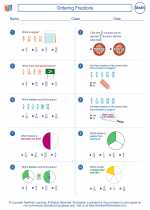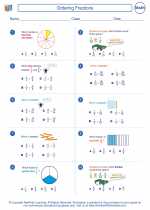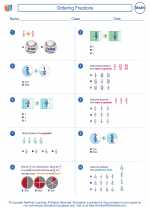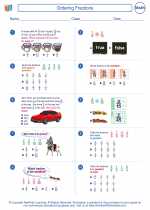Ordering Fractions
Ordering fractions involves arranging fractions from least to greatest or from greatest to least. To compare and order fractions, you can use a common denominator or convert the fractions to decimals.
Comparing Fractions with a Common Denominator
When comparing fractions with a common denominator, you can compare the numerators. The fraction with the greater numerator is the larger fraction.
For example, when comparing 3/4 and 5/4, since the denominators are the same, you compare the numerators. 5 is greater than 3, so 5/4 is larger than 3/4.
Comparing Fractions by Converting to Decimals
Another method for comparing fractions is to convert them to decimals. Once the fractions are in decimal form, you can compare the decimal values to determine the order.
For example, to compare 1/2 and 3/4, you can convert both fractions to decimals. 1/2 is equal to 0.5 and 3/4 is equal to 0.75. Since 0.75 is greater than 0.5, 3/4 is larger than 1/2.
Study Guide for Ordering Fractions
Here are the steps to follow when ordering fractions:
- Find a common denominator if the fractions have different denominators.
- Compare the fractions using the common denominator or by converting them to decimals.
- Arrange the fractions in order from least to greatest or greatest to least.
Practice comparing and ordering fractions using different methods to become comfortable with the concept.
Remember to always simplify the fractions before comparing, if necessary.
Now you can practice by solving the following exercises:
- Order the fractions 3/5, 1/3, and 4/7 from least to greatest.
- Compare the fractions 2/5 and 5/8 by finding a common denominator.
Good luck with your practice!
.◂Math Worksheets and Study Guides Sixth Grade. Ordering Fractions

 Worksheet/Answer key
Worksheet/Answer key
 Worksheet/Answer key
Worksheet/Answer key
 Worksheet/Answer key
Worksheet/Answer key
 Worksheet/Answer key
Worksheet/Answer key
 Worksheet/Answer key
Worksheet/Answer key
 Worksheet/Answer key
Worksheet/Answer key
